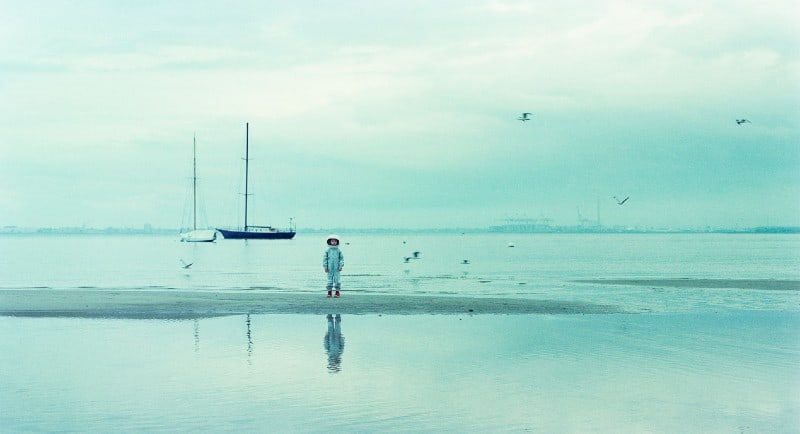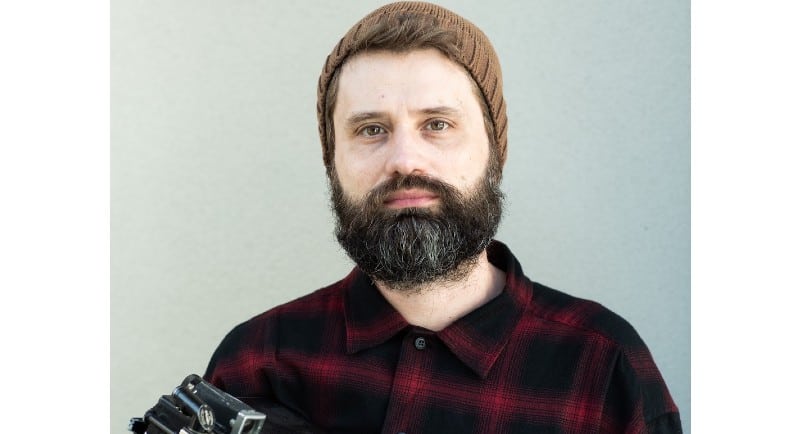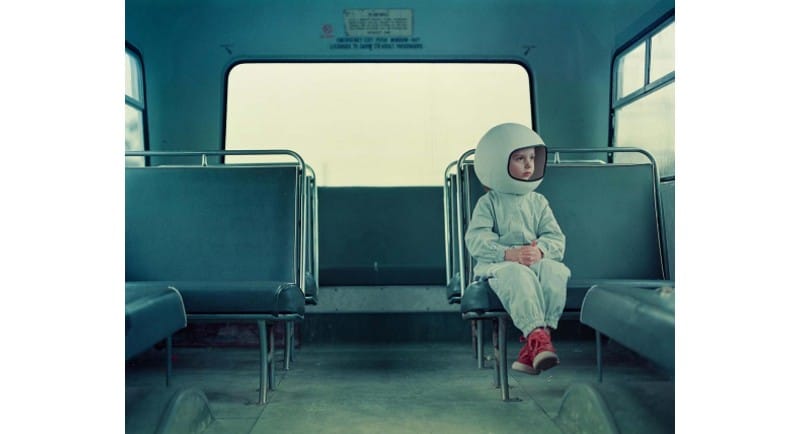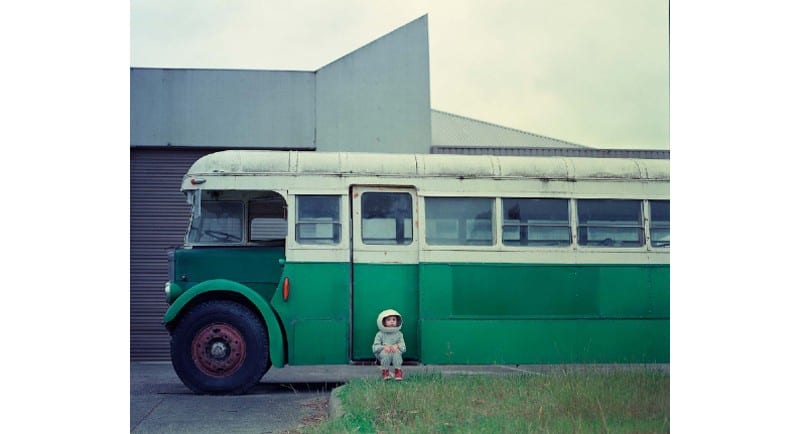Throughout the COVID-19 pandemic, Melbourne endured more lockdowns than any other city in the world, spanning a cumulative 262 days. For many, the period marked a dismal grind, a creative halt, an imaginative lull.
Andrew Rovenko was an exception. During Melbourne’s sixth and final lockdown, the DDB Melbourne creative technologist created the award-winning The Rocketgirl Chronicles – Backyard Space Travel photography series.
A testament to the creativity that can emerge in tough times, the series went on to collect such accolades as a finalist position in the National Portrait Photographic Prize (2022), and Australian Photography Magazine Photographer of the Year – Overall Winner, Portrait Winner (2021).
Most recently, in October last year, Rovenko turned the series into a photographic book, which was crowned the Tokyo International Foto Awards – Book/Fine Art Winner (2023).
Rovenko believes the experience taught him the power of limitations and resilience – qualities that resonate in his work today. According to him, “embracing the limitations of technology can be used as a vehicle to shape and convey the creative idea.”
Speaking to Mediaweek, he recalls, “We had to find a new way to get new experiences in the same environment.” Rovenko’s family spent their time visiting the nearby Moorabbin Air Museum, with its collection of vintage aeroplanes on the grounds.
First picking up the camera in his native Ukraine, where he found moderate success as a young photographer, Rovenko says his passion for photography was reignited.
“I moved back to traditional film photography, because it was a bit of a slower process. You feel more in the moment.”
This momentary suspension, this quiet and considered slowness, is palpable in Rovenko’s Rocketgirl series, born from the constraints of a five kilometre radius and two hour-long outings per day permitted at the time.
Rocketgirl (officially titled The Rocketgirl Chronicles – Backyard Space Travel) follows Rovenko’s daughter Mia, dressed in a homemade spacesuit and papier-mâché helmet, crafted by Rovenko’s wife Mariya.
The Shuttle, which fronts the Rocketgirl series, depicts Mia sitting in a 1972 CAC Comair bus, watching as a thunderstorm approaches. The image is a poignant juxtaposition of the isolation and unprecedented absurdity of the lockdowns, contrasted with the enduring wonderment of childhood.
“That kind of costume and imaginative play, that was the switch to transform your environment, at least mentally. That was the creative answer,” says Rovenko.
“It’s the same with work as well.”
“Creative problems are the creativity itself, and the ability to come up with new things. It’s the opposite of using a formula.”
Rovenko describes his role as creative technologist at heritage creative agency DDB as “the glue” that synergises the pillars of creative, technology, media, and strategy.
In his words, “Functioning ADHD people will really excel at this job.”
Thanks to the rapid evolution of media and advertising over the past two decades, the creative technologist role came about, though Rovenko jokes a precise job description is somewhat of a daily struggle.
“My job is to keep my finger on the pulse of whatever is happening in the tech world,” he says. “I must be able to figure things out really quickly.
“If there’s something new that comes out, I need to make sense out of it. I need to be able to package it up in a really easy-to-understand format.”
Rovenko says his responsibility is to contextualise how technology can be relevant to the creative industry, showcasing its potential use-cases for creatives. He achieves this mostly through presentations and internal talks.
His day-to-day revolves around experimenting and prototyping alternative solutions in the face of technical limitations, aiming to preserve the integrity of original creative ideas, all while prioritising feasibility and viability.
“An original creative concept can be obviously far and wide, but then you have to put in the constraints of budget, of what technology can actually do all the time,” he says.
Rovenko explains that, just as the lockdowns demanded a “creative answer” to alleviate daily life – the “imaginative play” so vividly captured in his photography – he adopts a similar approach to creative problem-solving at work.
In fact, Rovenko sees the film camera as a succinct metaphor for the plight of the creative technologist.
“It’s like a perfect blend of technical expertise to be able to produce a good photograph, and creative thinking to see that shot, to compose it well and to be able to tell that story.”
Rovenko remembers the first iterations of AI generative video “became synonymous with absurdity,” due to the imperfections of the available tools.
Instead of trying to overcome those limitations, Rovenko and his team leaned into them, creating the hilariously disconcerting Office Party from Hell for Funlab.
“I have to admit – I had a bit too much fun bringing it to life in just a couple of days.”
More recently, Rovenko stepped in when one of the key presenters for a highly anticipated all-staff meeting at DDB was indisposed.
“We found a way to re-create their presentation using technology, complete with realistic speech and video synthesis to the great surprise of all attendees.
“Only recently this would have been a very big task requiring significant production effort, but with some creative use of technology. We achieved quite an inspiring result with short notice and a $0 budget.”
One of his personal favourite projects which epitomises the innovation of the creative technologist, was the development of an online virtual reality test used as a recruitment tool for the Australian Secret Intelligence Service, from his time as senior developer at full service agency cummins&partners.
Rovenko describes it as a distinctly cross-disciplinary pursuit, involving the creation and integration of multiple complex task sequences into digital platforms to render them interactive, all aimed at identifying the ideal spy candidates.
“That was one of those examples where you could have gone with the standard recruitment approach … spent media budget on LinkedIn ads, or create a bunch of TVCs,” says Rovenko.
“But by giving people an experience to go through and self-align, that’s a much stronger way to engage and find that right candidate.”
The project quickly gained virality, generating $47.7 million of earned media, and prompting over 400,000 individuals to take the interview.
Reflecting on COVID and his time in lockdown, Rovenko appreciates it as a catalyst that disrupted formulaic thinking. He sees it as a reminder of the value of limitations as a pathway to meaningful transformation.
When faced with constraints that threaten comfort-zones, safety nets, tools, or time, the lesson is clear: “You have to figure out how you can communicate the same idea: how you can do it justice with less.
“And I think that’s really a great driver for original thinking.”
See also: DDB and VW launch RooBadge, designed to save kangaroos and cars
–
Top Image: ‘Mirror Planet’ by Andrew Rovenko (part of The Rocketgirl Chronicles)




